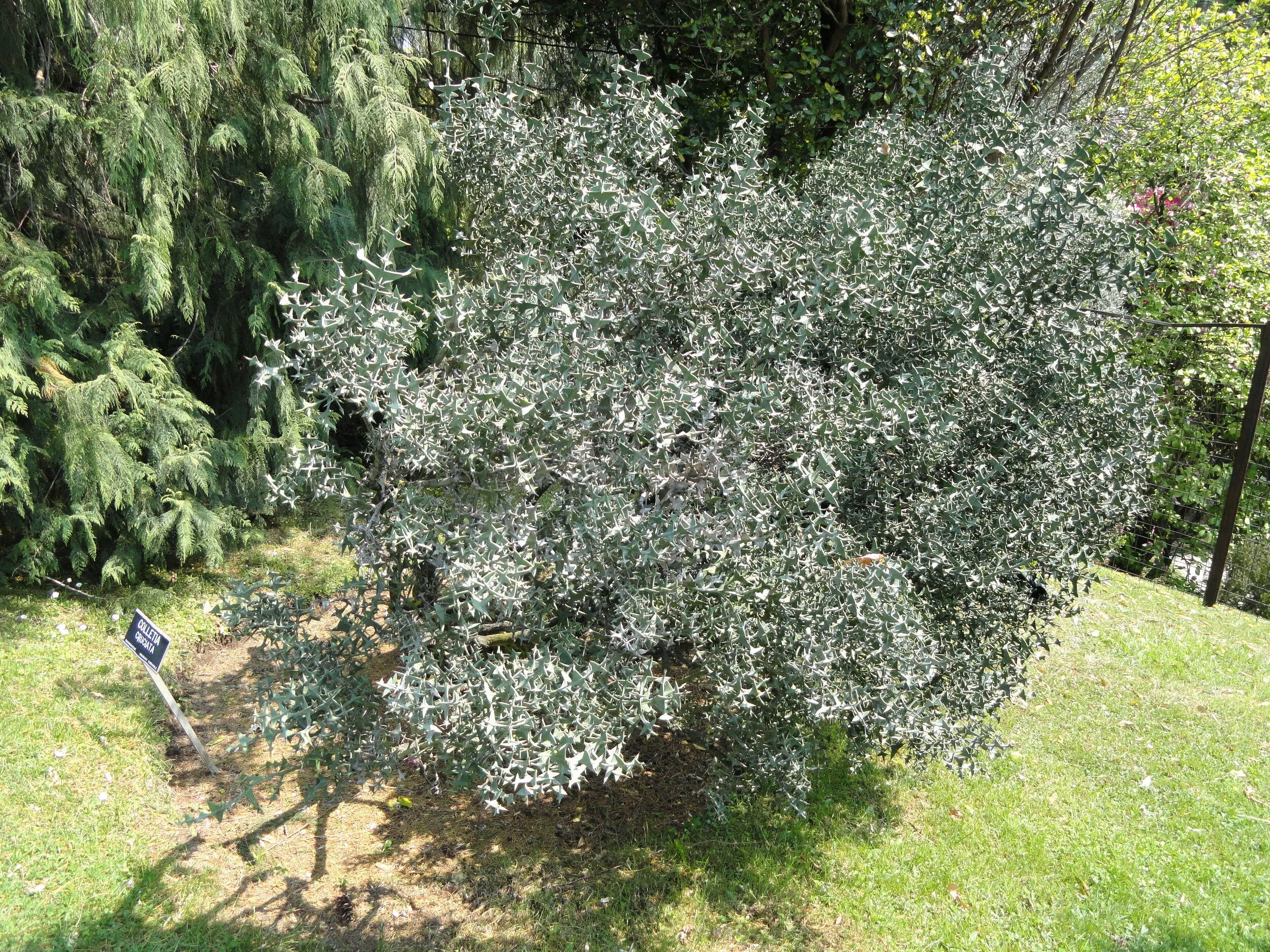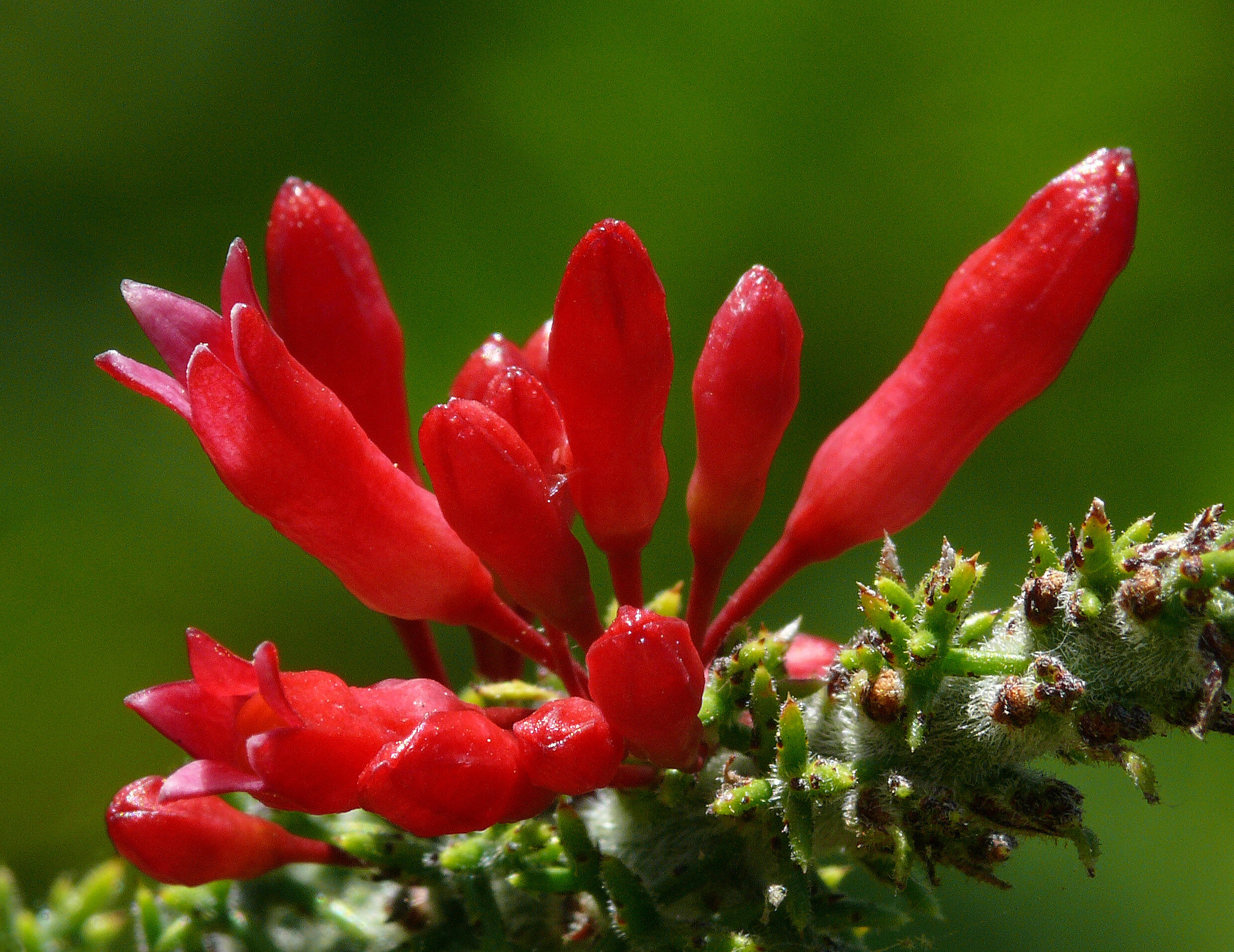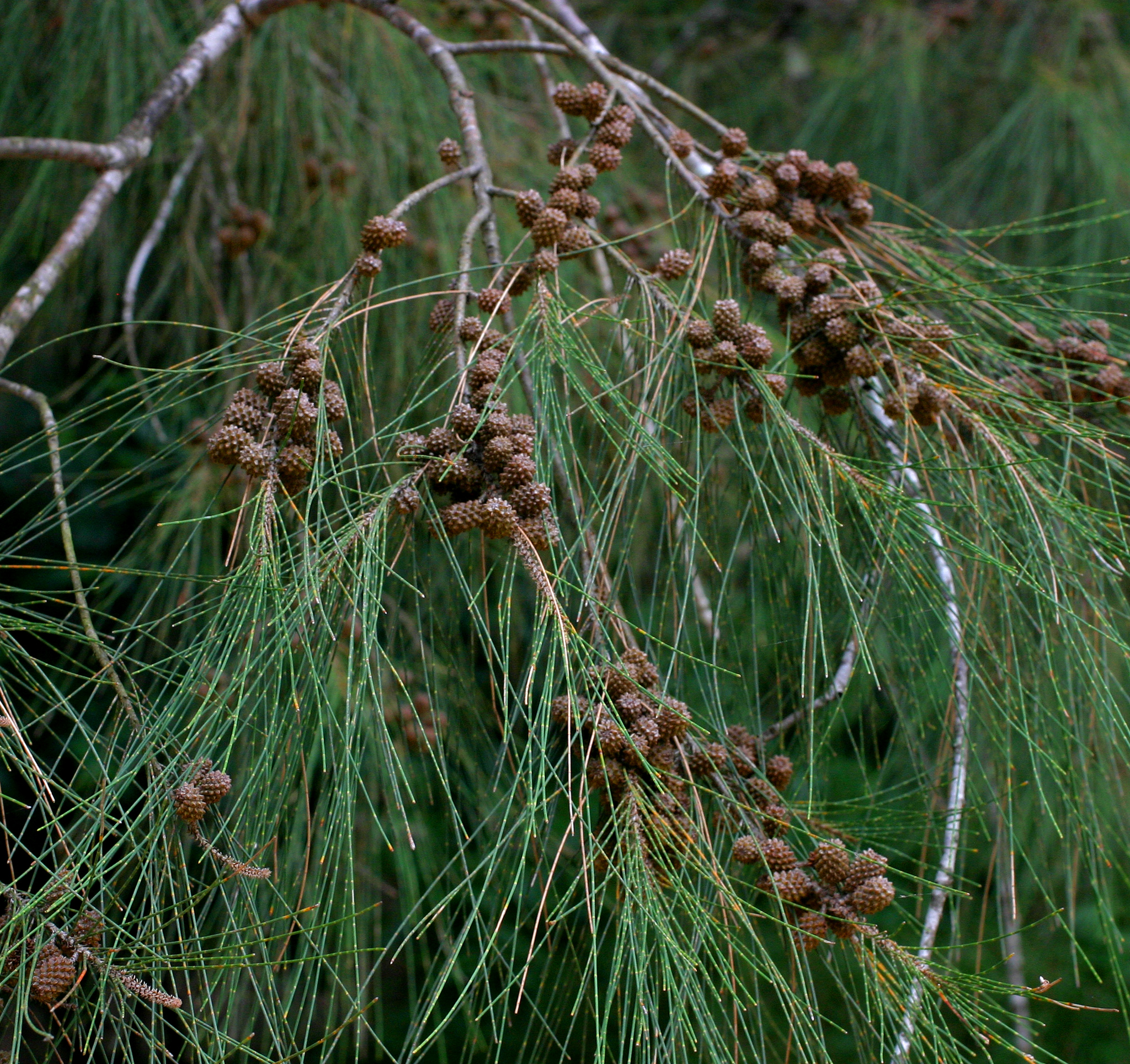Colletia paradoxa photo by James Gaither licensed by CC BY-NC-ND 2.0
When I think of the buckthorn family (Rhamnaceae), my mind conjures up images of battling with Rhamnus invasions around the Great Lakes or the amazing diversity of Ceanothus in western North America. Never have my thoughts drifted to the bizarre and wonderful genus Colletia. Native to temperate regions of South America, this strange group of spiny shrubs is certainly worth a closer look.
Though new to me, the genus Colletia has been known to science and horticulture since at least the late 1700’s. Hailing from temperate climates, at least two of the five known species of Colletia have found there way into temperate gardens elsewhere. Who could blame gardeners for their fascination with these shrubs. Close inspection of Colletia reveals surprisingly complex morphological features.
Colletia paradoxa
For starters, those large, thick, leaf-like thorns are not leaves at all. They are flattened extensions of the stem called cladodes. Instead of relying on leaves for most of their photosynthetic needs, the various Colletia instead produce chlorophyll in their stems. The cladodes function in much the same way as leaves in that their increased surface area maximizes photosynthetic potential. It is likely that cladodes are a means of conserving valuable resources for the plant.
Instead of producing vulnerable leaves that are subject to plenty of damage, these shrubs simply utilize stem tissues. Stems don’t need to be regrown year after year and by adorning the tips of the cladodes with spines, the plant is better able to protect its photosynthetic tissues. That is not to say that Colletia produce no leaves at all. Colletia will produce leaves near the base of each cladode, especially on younger tissues. Leaves, however, are deciduous and don’t stick around long enough to do much photosynthesizing.
Colletia ulicina with its red, tubular flowers. Photo by FarOutFlora licensed by CC BY-NC-ND 2.0
The flowers of Colletia ulicina are pollinated by hummingbirds. photo by James Gaither licensed by CC BY-NC-ND 2.0
Colletia are made all the more noticeable when they come into flower. For most species, clusters of lightly-scented, white flowers are produced at the base of the cladodes. For these species, insects are thought to be the predominant pollinators. Such is not the case for Colletia ulicina. This species produces sprays of bright red, tubular flowers along its stems. In the wild, these are pollinated by the green-backed firecrown hummingbird (Sephanoides sephaniodes).
Another interesting aspect of Colletia ecology is that they are all nitrogen fixers. To be fair, the plants themselves don’t do any of the fixing. Instead, they produce tiny structures on their roots called “nodules,” and those nodules house specialized bacteria collectively referred to as actinomycetes. In exchange for carbohydrates produced via photosynthesis, these bacteria fix nitrogen from the air. This extra boost of nitrogen allows Colletia to survive and excel in the nutrient-poor soils they call home.









